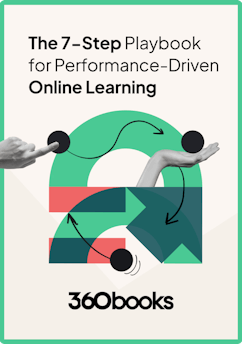Introduction: 2024 State of Online Learning Report
Despite tough economic conditions, the amount of money organizations spend on Learning and Development initiatives continues to increase. With changing working conditions, the prevalence of working from home, and globally dispersed teams, much of this investment is used to support the field’s increasing reliance on online learning.
This is certainly something new. After all, it doesn’t seem that long ago that online learning was seen as merely supplementary to classroom training, by L&D professionals and employees alike. A convenient fill-in, perhaps, but definitely not the main event.
But we no longer think this way. We can’t. Change is continuous and dramatic. Disruption and transformation are regular occurrences. We’re simply unable to rely solely on classroom or in-person learning in the face of the intense change, development, and growth required of our workforces.
Instead, online learning needed to step up.
The good news is that we’ve made great progress – as this report shows.
The good news is that we’ve made great progress – as this report shows. No longer the lesser-regarded supplement to classroom training, online learning is front and center: expected and respected.
But, despite the increased spending and change in perception, L&D teams must still grapple with the same, perennial anxiety: What’s the return on investment? Does the spend equate to value – and crucially, does all of this effort and resources lead to meaningful impact?
What’s the return on investment? Does the spend equate to value – and crucially, does all of this effort and resources lead to meaningful impact?
Business leaders tell us that skills are the number one bottleneck to growth. Talent leaders inform us that it’s difficult to get the required skills into their organizations. Sure, online learning may have grown in prominence and popularity, but is it working? If so, why are skills gaps such a problem? And what do we need to do to address skills gaps at scale and prove that we have done so with our piece of the huge global L&D spend?
The clues are all here to enable us to connect the dots, based on a survey of over 2,500 learners. In the chapters that follow, we’ll share our results and interpretations.
Before we dive in, a quick note on terms. In our survey, we chose to use the term online learning (as opposed to digital learning). We did so because we wanted to stay close to the vernacular of our target audience, who aren’t L&D professionals. So when you read online learning, know that we mean digital learning as we all know it.
With that in mind, let’s take a look at the first chapter, and see just how big of a transformation we’ve been able to make to online learning.


